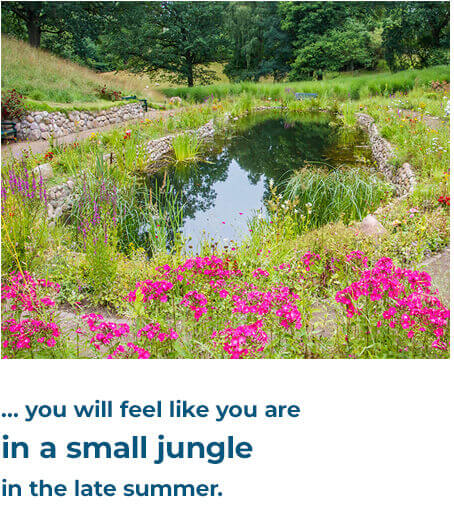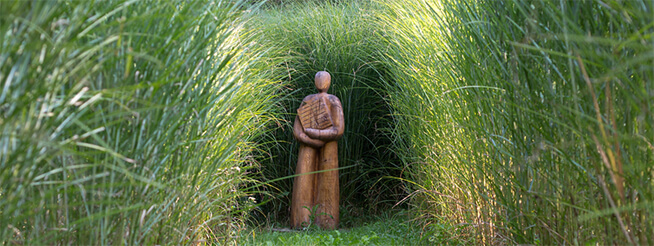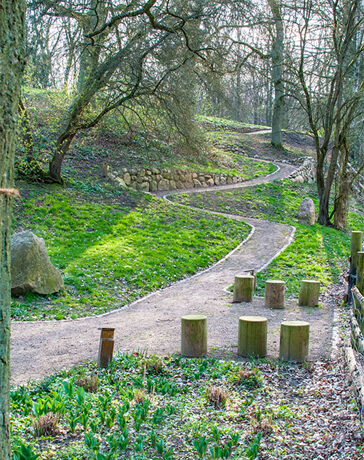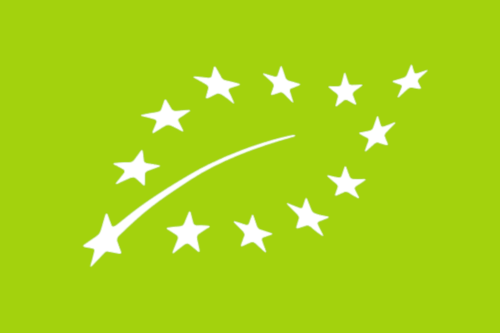The Arena

It is an unusual sight when you stand on the small fountain terrace on the edge of the cherry orchard and look down on the hilly arena. A sunken landscape that runs

We dug stone terraces of various lengths on both sides of the valley. The terraces on the right, which extend to the dahlia garden above, are mainly populated by wild roses. These flowers flourish in a vivid firework display here for many months of the year, which then rounds off in the autumn when the rose hips mature.

On the left side of the terraces are various grasses, which are supplemented by huge asters in autumn. Not to forget the Alpine Knotweed ‘Johanniswolke’, which shines brightly on you from afar with its glistening white. The large ones in the fields in the middle impress us in spring in their lush tulip splendour. The entire arena fills up at this time with a variety of bold colours and delicate shapes. It is a wonderful feast for the eyes!
Over the summer, the area turns into a wilderness; the Telekie is the first to mention, the yellow shrub with the incredibly large leaves. If you walk down the winding paths, you will feel like you are in a small jungle in the late summer, as our perennials here will become mighty high. ‘Near-natural garden’ – the description fits, especially when we are a bit late with the weeding. ‘But,’ the guests say at times, ‘the wild herb fits here wonderfully! I would not take that away…’ Well, to keep the weeds at bay, we need to do a proper weed at least once a year. Otherwise, the grasses of the former cattle pasture will conquer the place again!
If we let ourselves be guided by the meandering paths into the lower area of the arena, we reach the pond which is the centrepiece of the garden, housing many fish that can always be watched very closely through the clear water. If you visit us in the spring, you should take a closer look here, because every year the pond is a breeding ground for thousands of tadpoles, which grow up and populate our gardens as tiny frogs in early summer.

At the back of the
The human-sized figures are distributed in symmetrical intervals in the grass, each leading to a small path. The division of the art into 7 pieces is explained in greater detail on a small board.

At the very end of the area, when standing under the tall oak trees, you can look out over a vast valley, where you can usually see our skudden herd (an old sheep breed.) They are sharing this area with their feathered friends, the Emden geese, which provides a romantic atmosphere.
If you now turn left, you will find a small, winding path that leads to the beautiful perennial plateau, which is connected with a relatively steep slope and opens up completely different garden spaces.
If you want to take the loop back through the arena, you will pass a small enchanting rock garden. It lies tucked away behind the grassy sea and reveals quite large, as well as smaller stones that invite children to climb and bring you closer to stone as an element through looking and touching.
Past the large sea buckthorn shrubs, which spray their fiery orange in the autumn and make people screw up their face at the first tasting, you go past the Greek terrace into the dahlia garden. The arena offers space for many things.
If you take your time, there will be a lot to discover here!



